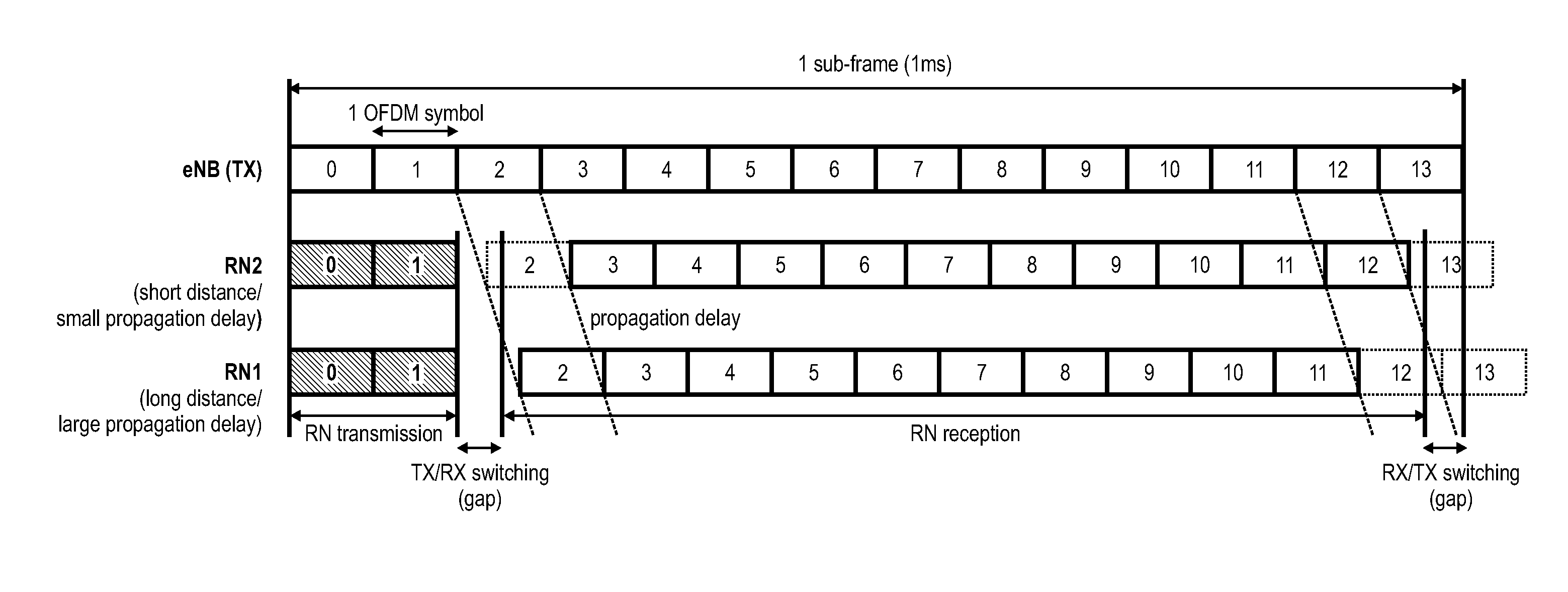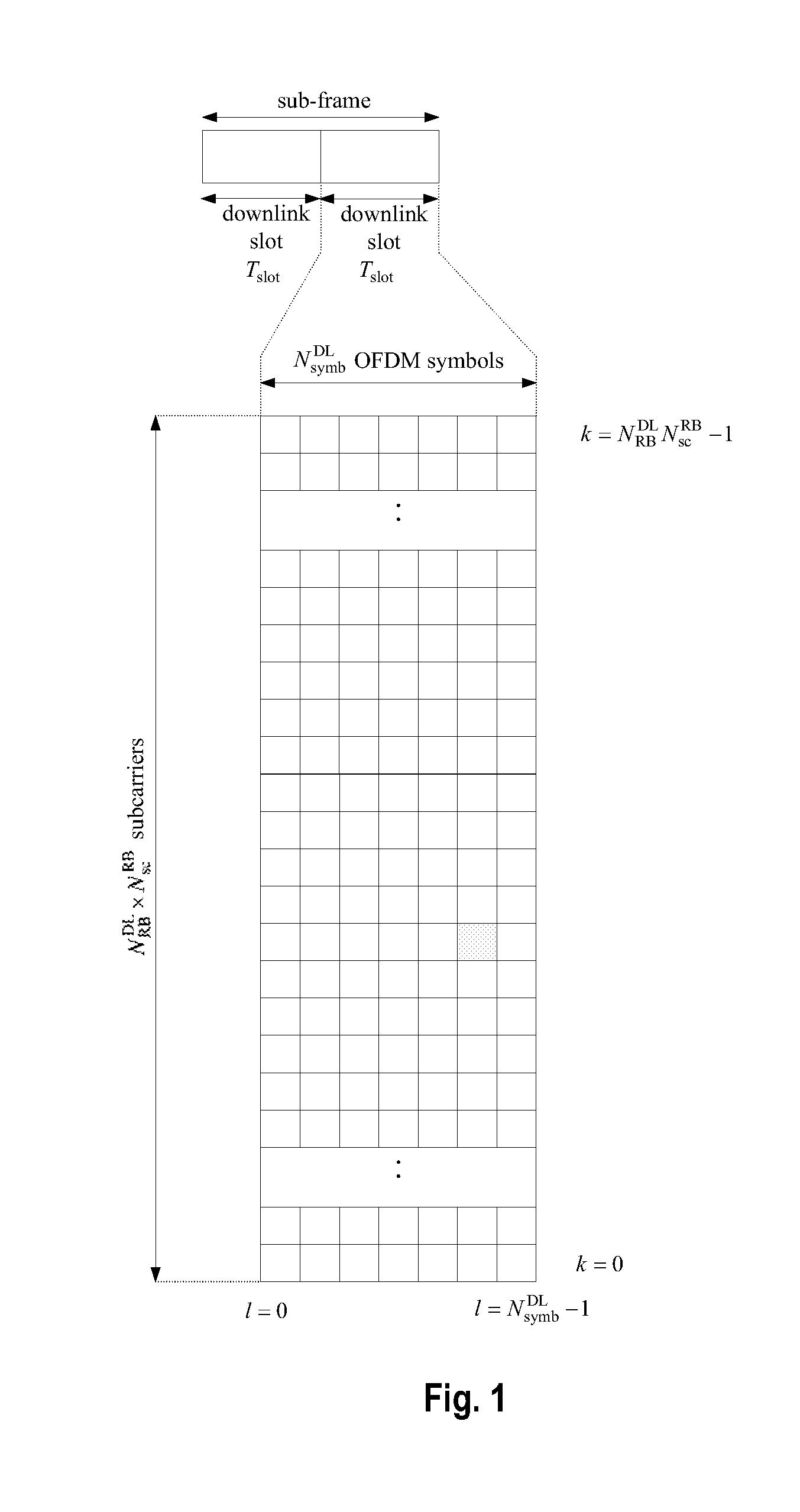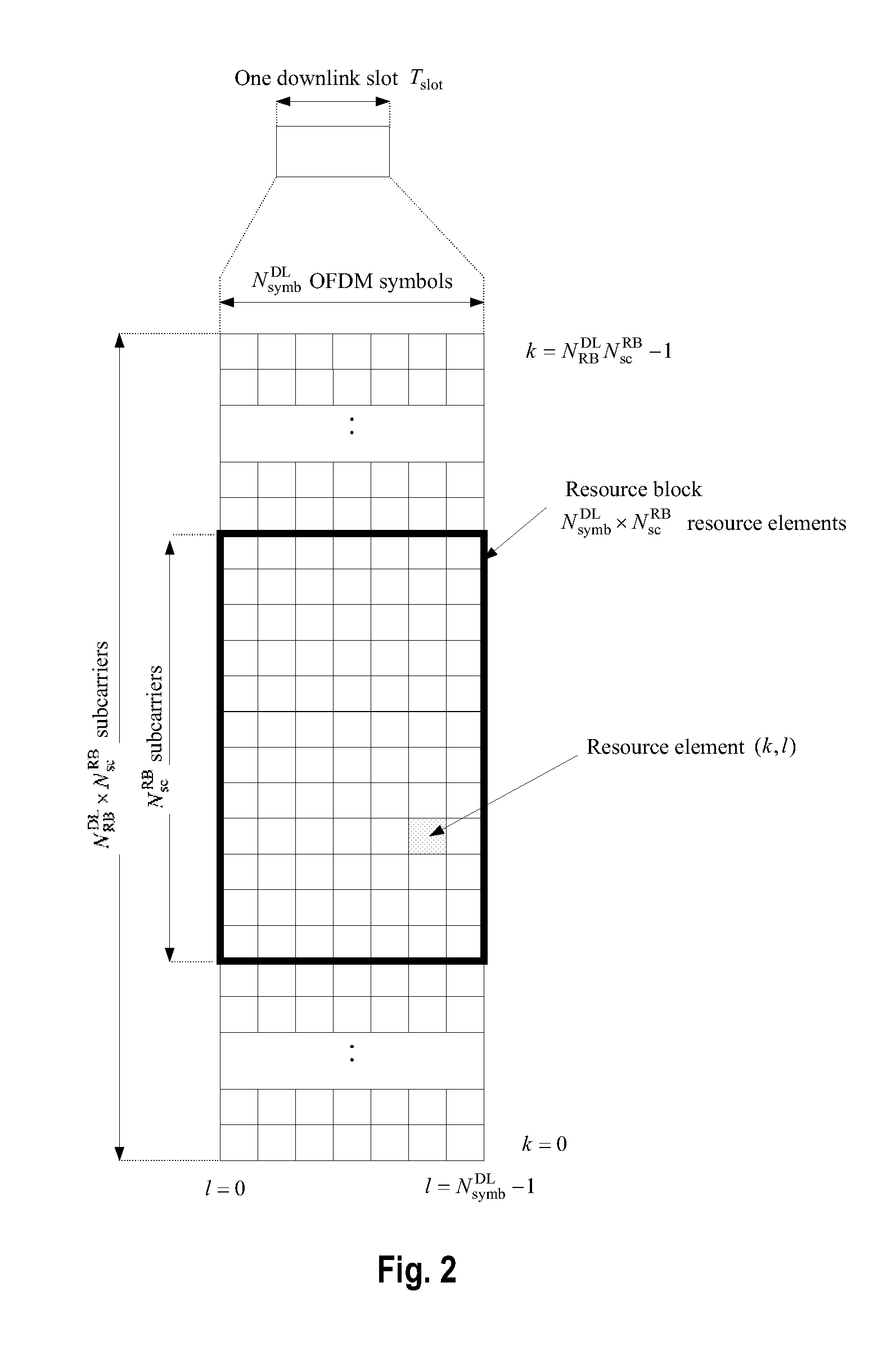Configuration of uplink and downlink grant search spaces in an ofdm-based mobile communication system
a mobile communication system and search space technology, applied in broadcast transmission systems, digital transmissions, transmission path sub-channel allocation, etc., can solve the problems of inability to use, inability to achieve simultaneous enodeb-to-relay node and relay node-to-ue transmissions on the same frequency resource, etc., to achieve the effect of expanding the overall system bandwidth and widening the transmission bandwidth
- Summary
- Abstract
- Description
- Claims
- Application Information
AI Technical Summary
Benefits of technology
Problems solved by technology
Method used
Image
Examples
Embodiment Construction
[0125]The following paragraphs will describe various embodiments of the invention. For exemplary purposes only, most of the embodiments are outlined in relation to an orthogonal single-carrier uplink radio access scheme according to 3GPP LTE (Release 8) and LTE-A (Release 10) mobile communication systems discussed in the Technical Background section above. It should be noted that the invention may be advantageously used for example in connection with a mobile communication system such as 3GPP LTE (Release 8) and LTE-A (Release 10) communication systems previously described, but the invention is not limited to its use in this particular exemplary communication network. The aspects of the invention described herein may be inter alia used for defining the search spaces for uplink and downlink grants (R-PDCCHs) for relay nodes in a 3GPP LTE-A (Release 10) communication systems and for providing an effective resource utilization in terms of R-PDCCH and R-PDSCH data being mapped to a down...
PUM
 Login to View More
Login to View More Abstract
Description
Claims
Application Information
 Login to View More
Login to View More - R&D
- Intellectual Property
- Life Sciences
- Materials
- Tech Scout
- Unparalleled Data Quality
- Higher Quality Content
- 60% Fewer Hallucinations
Browse by: Latest US Patents, China's latest patents, Technical Efficacy Thesaurus, Application Domain, Technology Topic, Popular Technical Reports.
© 2025 PatSnap. All rights reserved.Legal|Privacy policy|Modern Slavery Act Transparency Statement|Sitemap|About US| Contact US: help@patsnap.com



